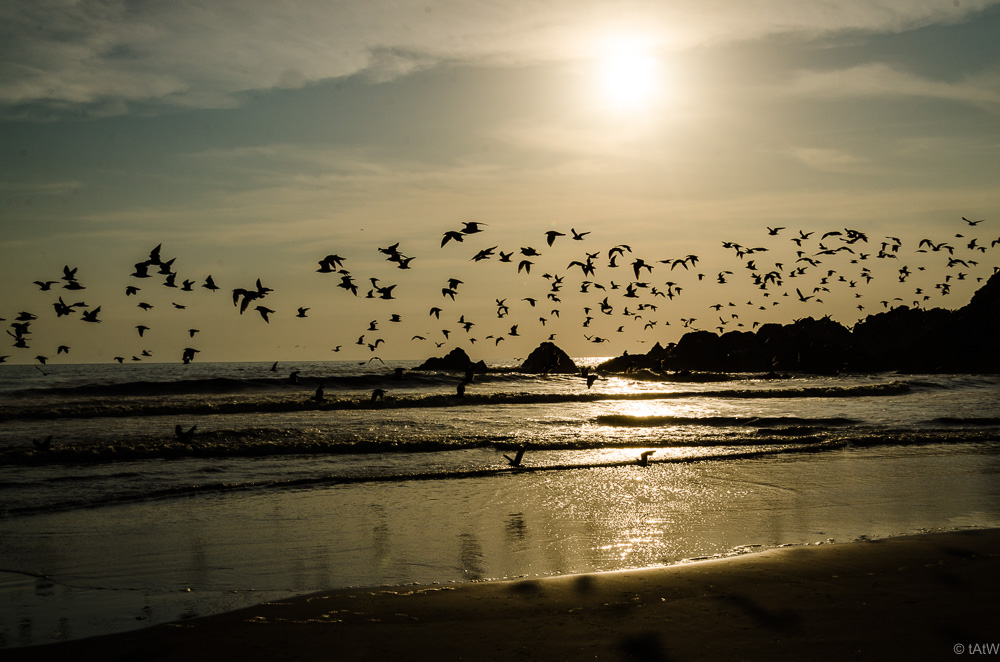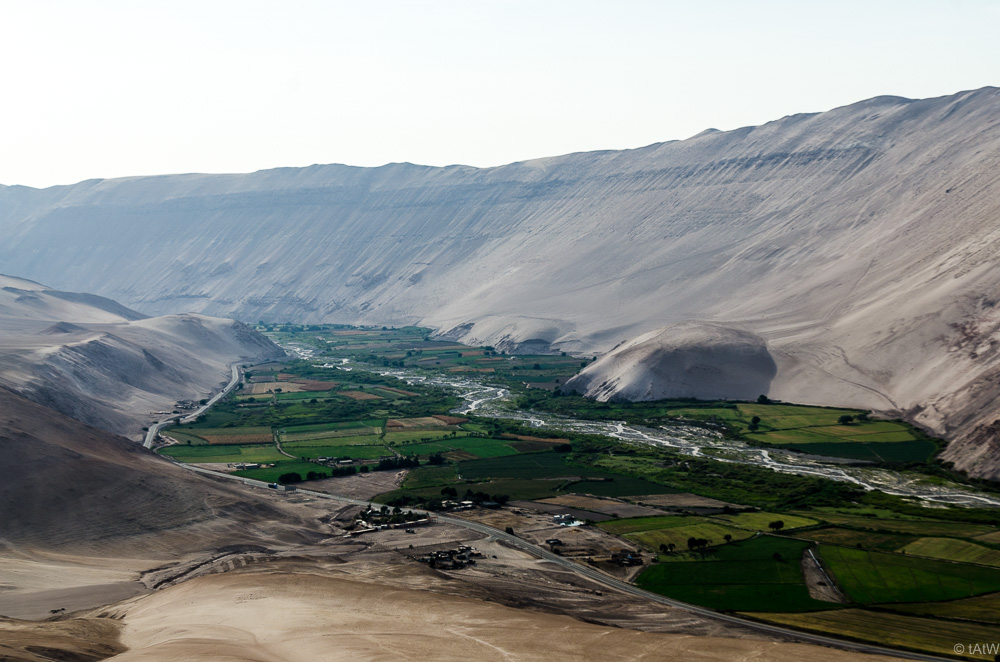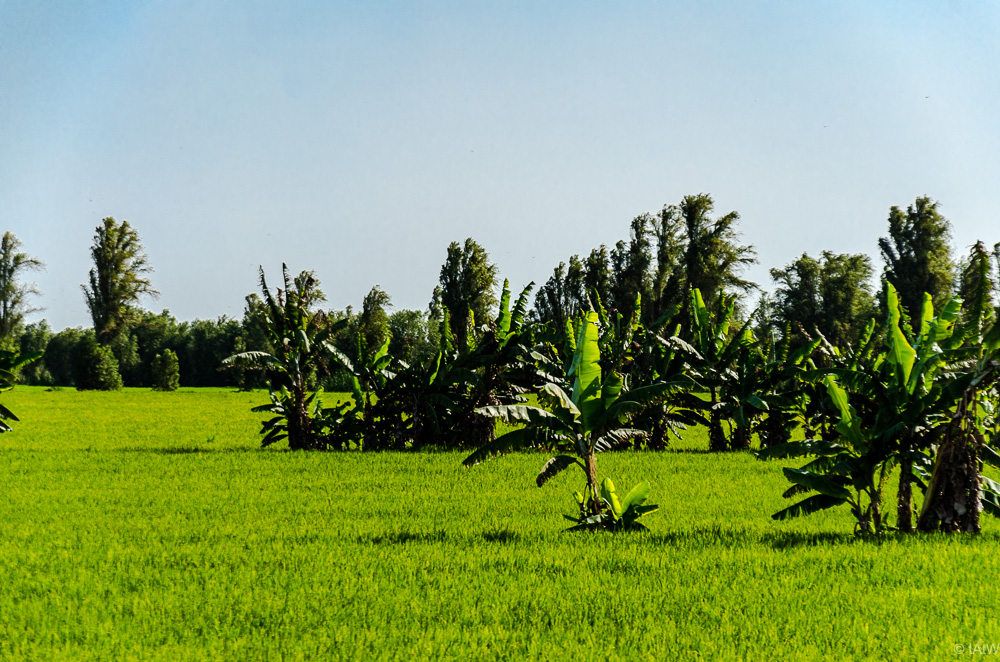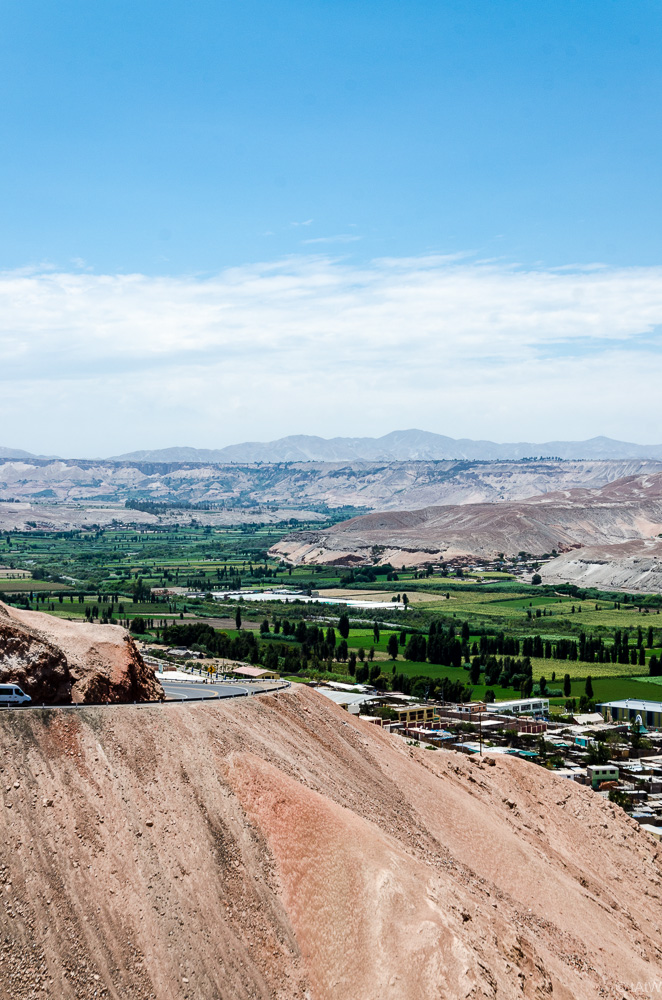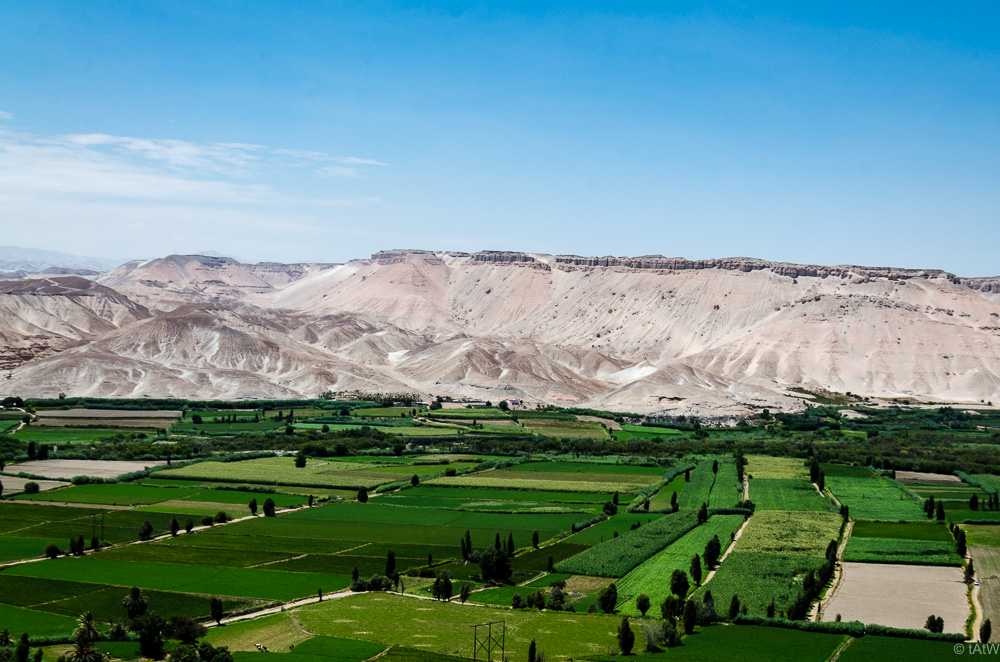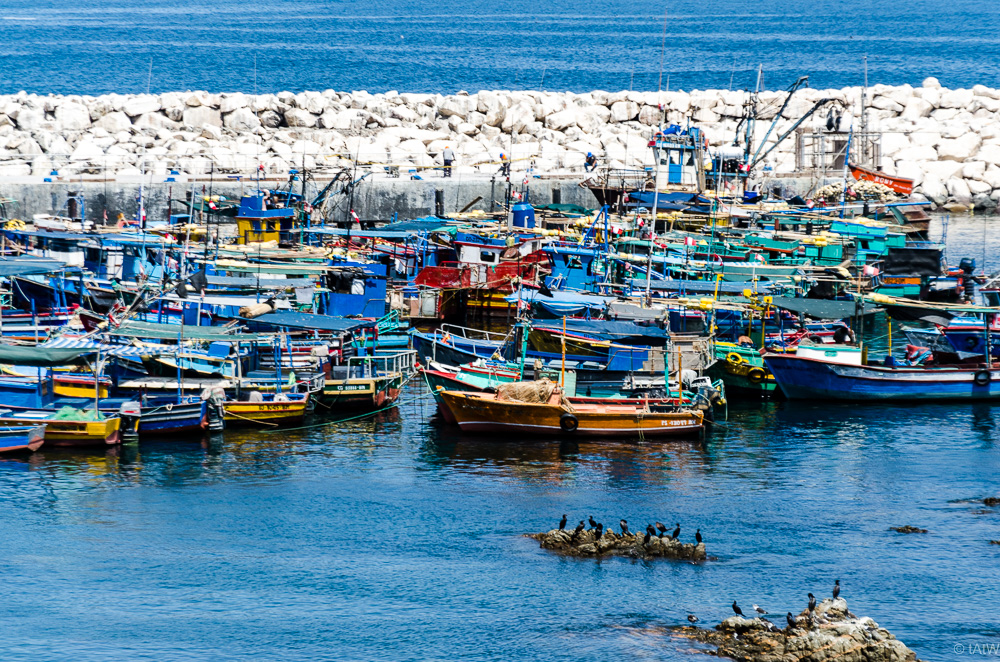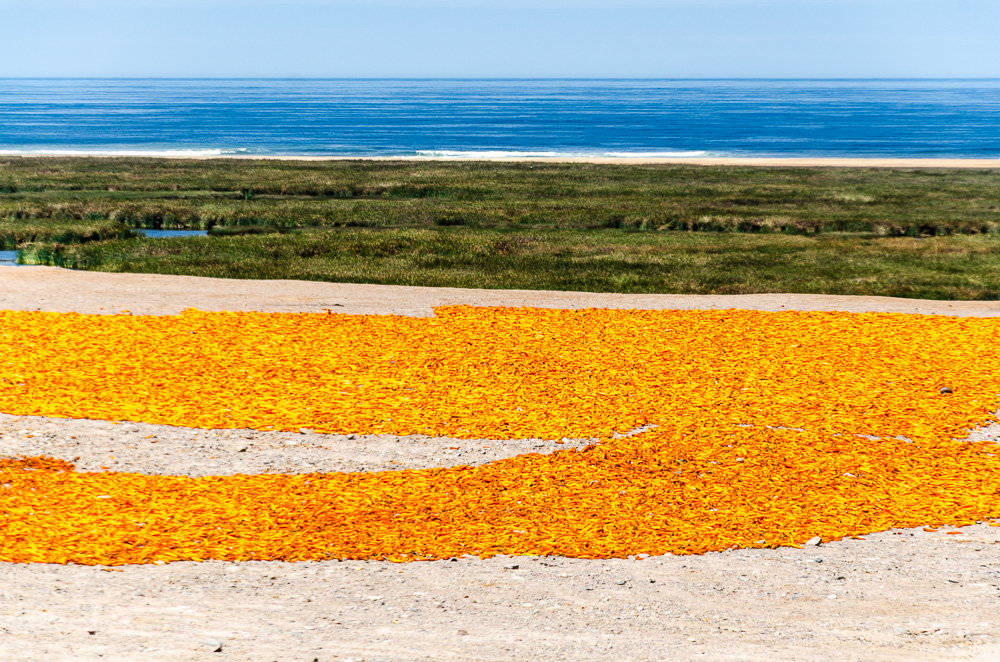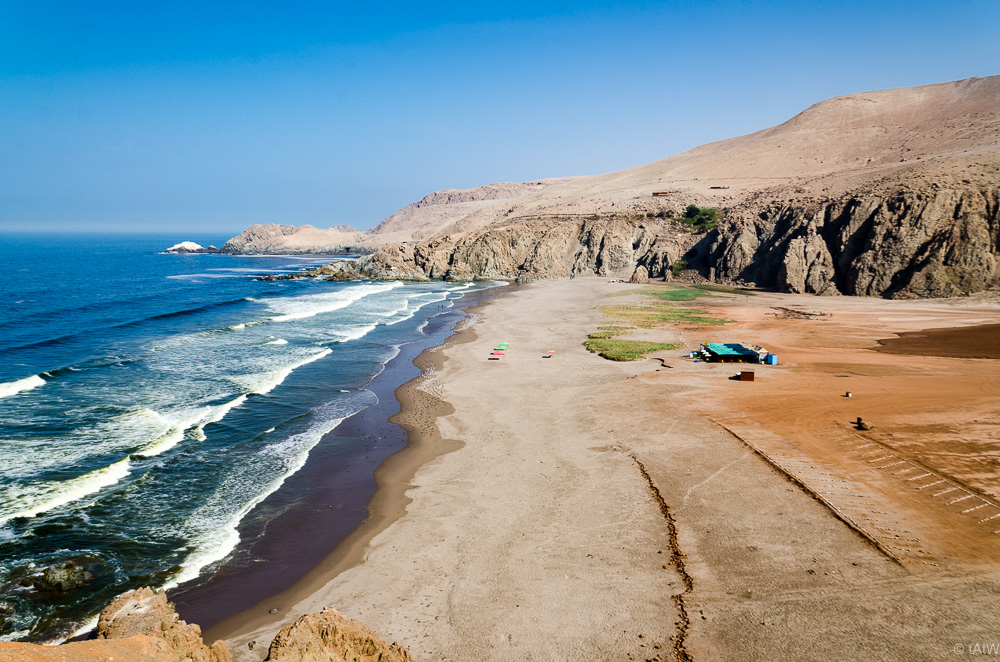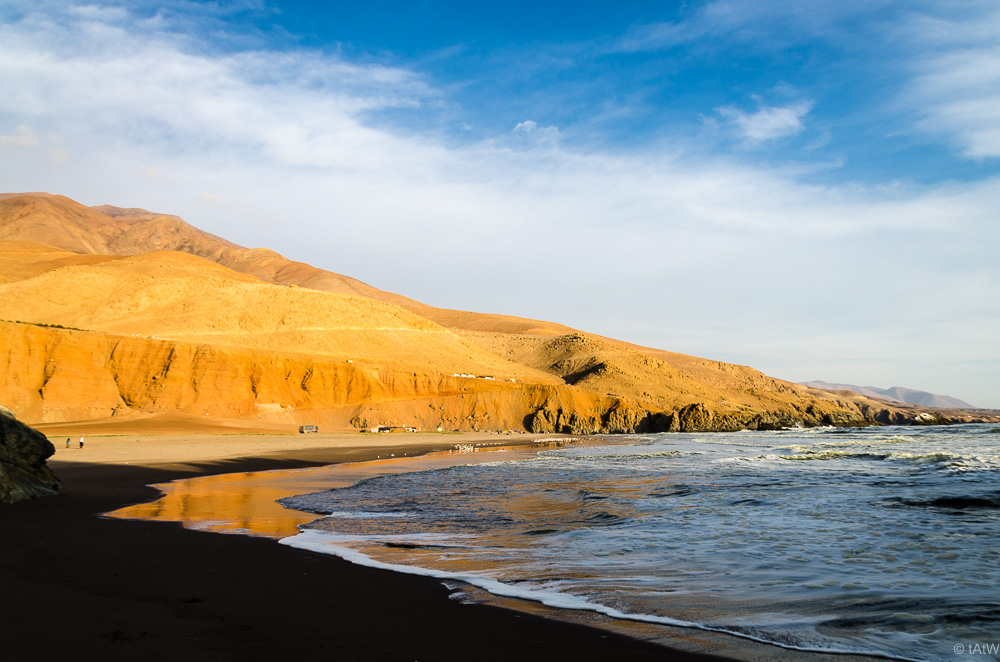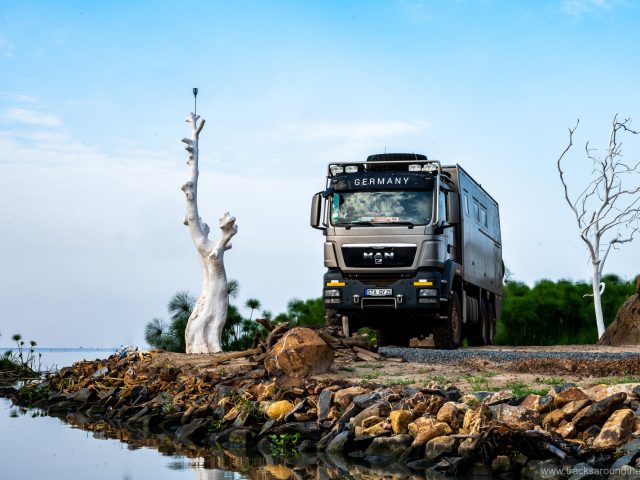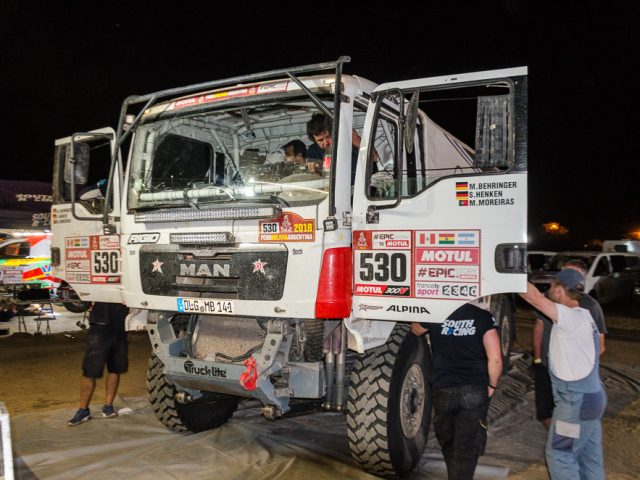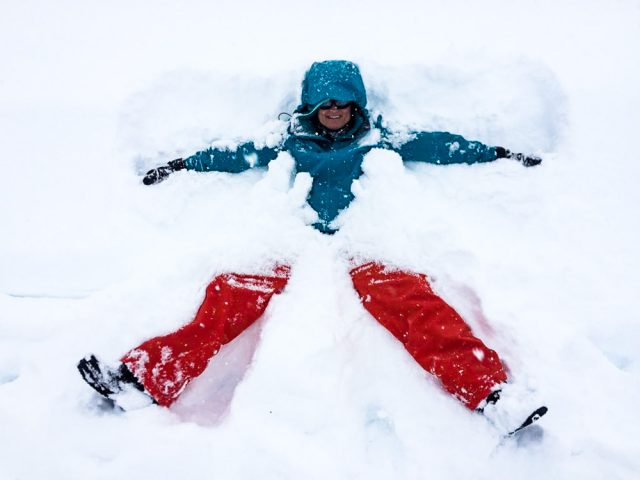From the Colca Canyon we drive on small, partly – by the rainy season – washed out slopes to the Pacific coast and descend from over 4,000 meters altitude to 0 meters sea level in half a day.
A few miles from the sea we learn the culmination of the Peruvian recklessness and stupidity when it comes to driving a car – or in this case a truck: there is a very narrow tunnel with clearly signaled indication that only one truck at a time should pass through. We stop and let 6 trucks and buses pass, behind us other waiting Peruvians hunk their horns. When we no longer see an oncoming truck, we make our way. When we passed half of the tunnel, we see a large semi-trailer truck hesitantly stopping and then, according to the motto “let’s create facts”, driving into the tunnel as well. Of course, we both cannot get past each other. We have covered 80% of the tunnel route, but nevertheless the semi-trailer driver makes no attempt to drive back. We stay calm in Shujaa, honk with our quadruple fanfare (so that the tunnel starts wobbling) and blink with our complete light tree on the cab. Nothing happens and we are waiting for the situation to develop. At some point it is getting too stupid for the Peruvians behind us (the whole tunnel is now full of vehicles), they get out and talk to the semitrailer driver. After much discussion, he sets the reverse gear, but first 10 cars have to be back out of the tunnel. What an act … and all just because a so-called “professional driver” cannot or do not want to use their brains.
Finally, when we arrive at the Pacific coast we are disappointed. Huge, ugly port facilities (from where especially the inland Bolivia handles a large part of its imported and exported goods) and large chemical plants characterize the scenery in the desert-like environment.
We drive the next 200 km south towards the Chilean border: no, we have not quite lost the orientation on our journey … at least not yet. Basically, our main travel direction is still “North”, but a) we got a strong recommendation to visit also the Chilean Altiplano with the “Salar de Surire” (which is almost opposite to the Bolivian “Salar de Uyuni”) and b) Shujaa has quite a lot of tire wear due to the many tracks and serpentine driving, so we bought new tires in northern Chile (before we come to countries where our tire dimension is even harder to obtain).
The south-Peruvian coast could not be more contrasting: port and chemical plants alternate with beautiful desert scenarios and dreamily built into the mountain coastal roads, where there are always nice trips to small beaches. In between, the desert ambience is interrupted by versatile cultivated areas, such as green rice plantations (which we really would not have suspected here) and pepper cultivation whose ripe pods – very photogenic – are lying on the roadside to dry.


